Will Arm Curls Release Testosterone
Will Arm Curls Release Testosterone
This guide covers everything you've ever wanted to know about how exercise and testosterone are related. From weight lifting while on Testosterone Replacement Therapy (TRT) to how High Intensity Interval Training helps those who suffer from borderline Low T and more, this guide will walk you through each topic and help you understand what's true, what's not so true, and what to do next.
Use the table of contents to navigate to the information you're most interested in, or simply start reading.
Table of Contents — Exercise and Testosterone
-
- The Role of Testosterone in the Body (And How That Relates to Your Ability to Build Muscle)
- What Happens to My Muscles and Body When I Have Low Testosterone?
- Fatigue: Low Testosterone Handicaps Your Exercise Efforts
- Testosterone Encourages Lean Muscle Production — Excess Estrogen Encourages Excess Fat Production
- How Exercise Can Boost Testosterone
- 6 Testosterone-Boosting Exercises
- Making the Most of The Right Exercises
- How to Start an Exercise Program to Boost Testosterone and Get in Shape
- Stress, Sleep, Sex, Sunlight
- What If I'm Not Seeing Results? — TRT Might Be For You
- How Testosterone Replacement Therapy Can Improve Your Results in the Gym
- TRT Is NOT the Same as Illegal Steroid Use
Exercise and Low Testosterone — The Connection
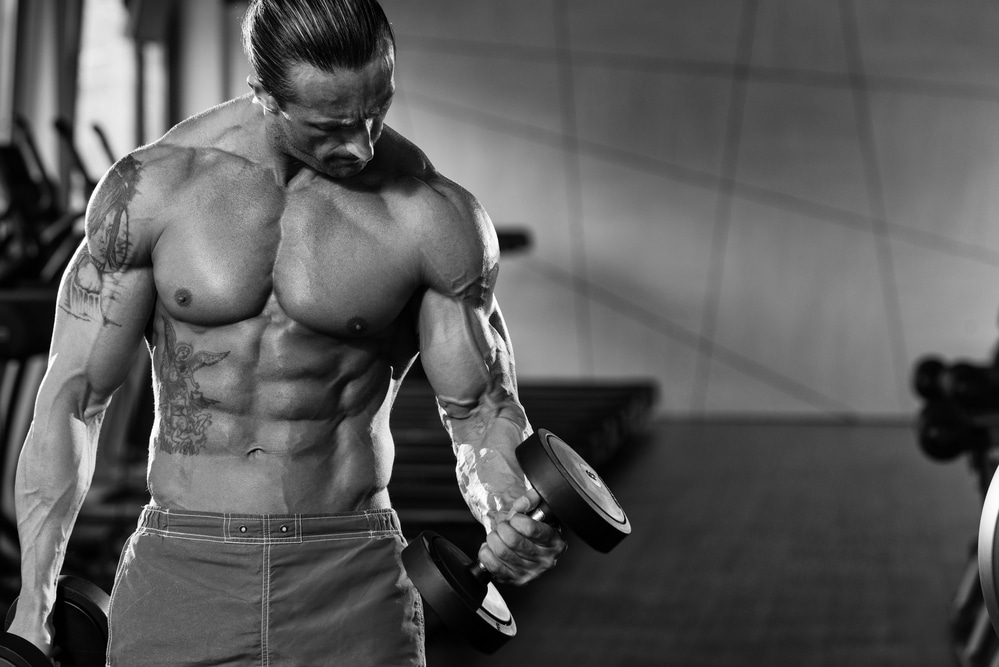
You have probably already heard that testosterone, exercise (including weightlifting), and lean muscle production are inherently connected.
For decades, the media has told us that testosterone boosts muscle growth — that's true. However, the relationship isn't just cause and effect.
In fact, there's a cycle that occurs. Testosterone boosts lean muscle production that's stimulated by exercise, but the opposite is also true — exercise stimulates the body to produce more testosterone. The resulting increases in lean muscle mass in turn increase capacity for more exercise and even greater testosterone production.
The testosterone-exercise dynamic is a self-perpetuating cycle, and both high-intensity endurance training and resistance training (weightlifting) have immediate and significant impacts on your testosterone.
Slightly increasing your own testosterone naturally is one of the main benefits of beginning a weightlifting regimen and sticking to it.
Let's talk a little about the role testosterone performs in the body before we jump into the specifics of testosterone and exercise.
1. The Role of Testosterone in the Body (And How That Relates to Your Ability to Build Muscle)
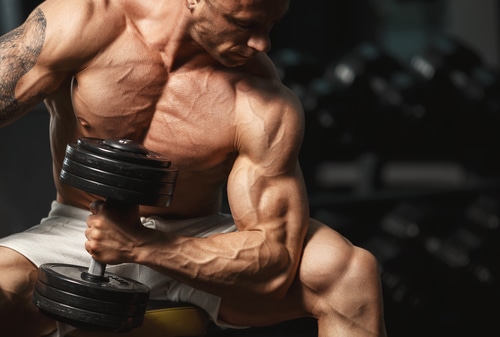
The following are some of the critical bodily processes that testosterone levels affect in men (and women):
- Fat distribution control
- Muscle mass creation
- Strength development
- Bone mass maintenance
- Red blood cell production
- Sex drive regulation (libido)
- Sperm production
You can easily see how the first 4 items from this list contribute to a healthy physique and a more vibrant appearance. When testosterone levels are healthy, your body looks and feels better.
2. What Happens to My Muscles and Body When I Have Low Testosterone?
Hormones are the chemical messengers circulating through your body. They can drastically affect how you look and feel, depending on what information their messages contain.
Testosterone, specifically, signals the body to produce more lean muscle by binding itself to receptors found on muscle cells and initiating an increase in protein synthesis to grow more muscle tissue at a faster rate.
Without this necessary hormonal signal, your body will not properly repair itself and adapt normally to the exercise load you're placing on it.
To put that another way, low testosterone levels could be preventing you from seeing the progress in the gym you would be able to achieve if your body had a more optimum hormonal balance.
3. Fatigue: Low Testosterone Handicaps Your Exercise Efforts
One of the most common symptoms of hormone imbalance, including clinical hypogonadism (the medical term for low testosterone), hypothyroidism, and low estrogen, is chronic fatigue.
It is often found that men (and women) suffering from low testosterone or other hormone imbalances simply don't have the energy levels they used to.
This loss of vigor can make working out or staying active more difficult.
Going to the gym or hitting the streets for a run can seem impossible, or at least very unpleasant, when you're already exhausted.
4. Testosterone Encourages Lean Muscle Production — Excess Estrogen Encourages Excess Fat Production

If you're suffering from symptoms that might indicate a hormone imbalance, like low testosterone or low estrogen (whether man or woman), you need to know some basic physiological facts.
Your hormone levels are not just numbers. Hormone imbalances occur when the ratio of, for example, testosterone to estrogen, is out of sync. That poor biochemical combination results in your symptoms.
However, correcting a hormone imbalance is not just about manipulating hormone levels represented by numbers, but more about getting your body working for its own benefit.
Getting your hormonal system (called your endocrine system) working the way it's supposed to is an important aspect of naturally improving a mild hormone imbalance.
Consider the following facts about testosterone and estrogen:
- Testosterone produces more lean muscle tissue
- Lean muscle contributes to still greater increases in testosterone production
On the other hand:
- High estrogen levels result in greater fat tissue production
- Fat tissue is actually an estrogen-producing organ — more fat means more estrogen
You can probably see the unhealthy snowball effect that can develop — being out of shape can lead to a self-perpetuating, estrogen-heavy balance that can lead you further and further from your goals.
At some point, you have to interrupt that unhealthy cycle to stop producing excess fat, produce more muscle, and get your hormone production working for you instead of against you.
That's where exercise comes in.
The links between exercise and testosterone production have been studied by researchers for decades. Studies seem to indicate that particular types of exercise may increase your testosterone levels more than others.
Let's get specific about the types of exercises you should be doing to benefit testosterone production and stabilize your hormone levels.
Talk to a TRT expert and get back to feeling the way you're supposed to.
Now serving patients in all Texas cities.
5. How Exercise Can Boost Testosterone
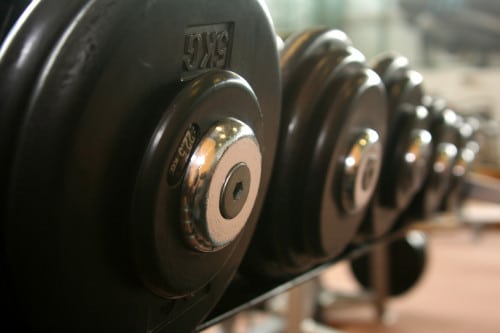
Before we get started, it's important to note that any increases in testosterone due to exercise are always temporary, usually only lasting a little while after activity levels fall.
However, you may find that these specific types of exercise help with your symptoms. In fact, the act of exercising itself may also help with some of the symptoms of low testosterone, like mild depression and insomnia.
HIIT (High Intensity Interval Training)
High intensity interval training (HIIT), sometimes simply called interval training, is characterized by the repetition of short 2-3 minute bursts of activity that push you to your limit, followed by very brief periods of rest.
The intent is to create an oxygen debt that your body will work hard to recover from.
This recovery deficit will keep your metabolism higher than normal for a few hours after the workout is complete, making HIIT a highly efficient, calorie-and-fat-burning method of working out that has been shown to increase testosterone and HGH (human growth hormone), which the human body relies on for increases in lean muscle and bone density.
Circuit Training
The term "circuit training" refers to a series of exercises performed one after another. When all the planned activities are completed, you take a short rest and start all over again at the first drill.
Circuit training is similar to interval training, but the focus here is usually on working out several different muscle groups, which helps prevent over-exhaustion or injury while also providing a more complete workout for more portions of your body.
Heavier weights
When hoping to build lean muscle and aid your testosterone production, there's probably no better activity than heavy weightlifting that uses all the major muscle groups.
Through greater weight and lower repetition, you experience a different form of intensity, but it's the near-limit exertion that matters — a heavy lift, in general, is probably the best exercise for boosting testosterone that you can do.
Evidence suggests that low reps with as much weight as you can handle increases testosterone production because you demand that your body produce more muscle to raise its maximum performance.
Now let's get into some specific testosterone-boosting exercises.
6. Testosterone-Boosting Exercises
1. Short Sprints
Studies indicate that testosterone levels increased in men who regularly engaged in a series of quick, intense running episodes. By incorporating 5 or 6 intense sprints of under 10 seconds each, you may be able to reap these same benefits.
BEST EXERCISE | Increase Growth Hormone & Testosterone WHILE Naturally Anti-Aging
2. Deadlift
While any heavy lifting can help boost your testosterone levels, it seems that the good old-fashioned deadlifting — with the weight held close to your body — maybe the most effective heavy lift of them all.
How to Perform the Deadlift - Proper Deadlift Technique & Form
3. Squats
The squat primarily utilizes your thighs, including the quads, hamstrings and glutes, but you're also doing a phenomenal core exercise that requires tremendous stabilization from your torso, lower back, and abdominals.
How to Perform the Squat - Proper Squats Form & Technique
4. Bench Press
Moving to your upper body, the bench press again hits a wide range of muscles. This compound lift will even bring your core into the workout.
How to Perform Bench Press - Tutorial & Proper Form
5. Rowing
While there are many different types of rows (bent over row, barbell row, T bar row), any of them will do — they all work a large section of your back.
How to perform T Bar Row - Back Exercise Tutorial
6. Overhead Press
While getting your shoulders and arms involved, the overhead press (or any variation) is another excellent compound lift that forces your whole body to participate.
How to Perform Overhead Press - Proper Technique & Form
Talk to a TRT expert and get back to feeling the way you're supposed to.
Now serving patients in all Texas cities.
7. Making the Most of The Right Exercises
To get the most out of the exercises listed above, you need to be taking a few other key actions.
Add More Reps
There is evidence that, by adding a few more repetitions when weightlifting, the benefits to your testosterone levels increase. Workout with a partner, and once you've exhausted your ability to continue, have your partner spot you while you complete a few more reps.
Take Extended Rest Periods
Since testosterone seems to be boosted by heavy lifting, taking longer rest periods between sets increases how much you can do — rest periods help maximize your lifting strategies.
What About Running?
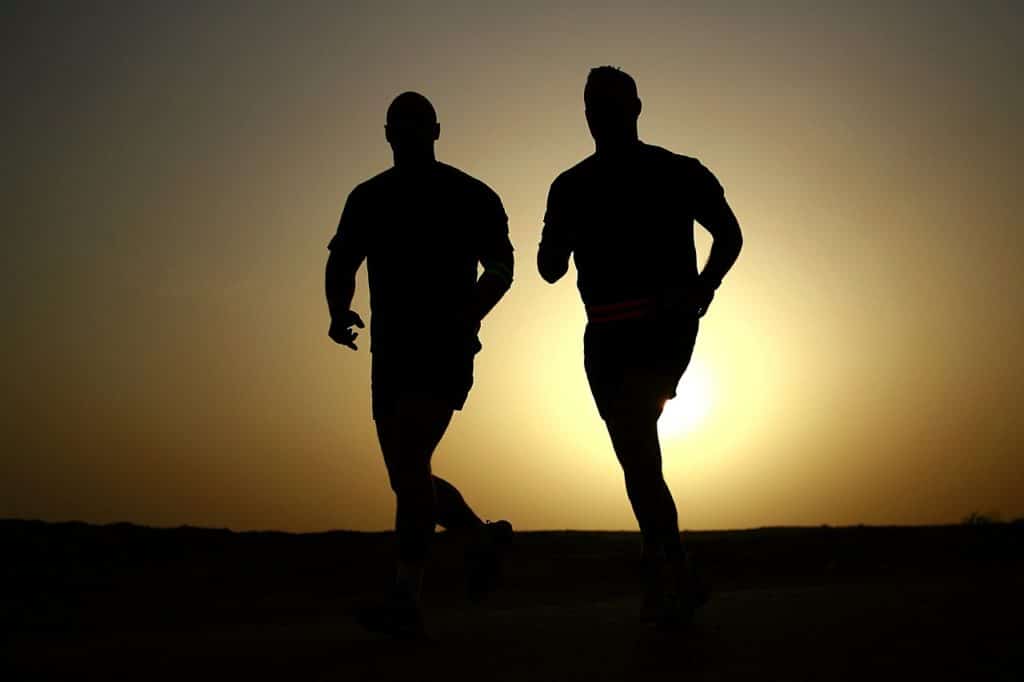
Running is an excellent cardiovascular workout. However, long jogs are not going to help boost your testosterone levels — they're just not doing what your body needs.
They're great for losing weight, and they're definitely better than nothing, but to really get those testosterone levels up, you need to be doing the sprints involved in HIIT (high intensity interval training).
Slow and steady workouts do not produce the necessary increases in testosterone production.
When you do these exercises in the right way with the proper technique, your entire body is utilized, turning it into a factory of efficient, intense muscle production.
More muscle equals a faster resting metabolism, which equals a leaner, stronger, and bigger you.
8. How to Start an Exercise Program to Boost Testosterone and Get in Shape
One of the biggest dangers of trying to get in shape fast is injury — especially if you haven't exercised in a while (or ever).
It's easy to injure yourself in the gym if you don't know what you're doing, or if you try to do the same things you were doing 5 years ago (or 10, or 20…).
Your body just isn't used to the strain — you're going to be sore in the beginning. It may take several weeks before you start to recover quickly.
Beginning to exercise intensely right from the start in order to lose weight immediately just isn't going to work — your body can't adapt that rapidly (at least, not naturally).
Just getting started is enough. Allow yourself time to get used to the idea of working out regularly, and allow your body time to respond and become strong. Start a program of exercise, give yourself permission to take your time and go slow, and don't give up.
No Time or Just Getting Started? How to Start a Home Fitness Routine

One problem that many people encounter is that they don't have time to go to the gym.
People who say things like, "Everybody has time to go to the gym," may have no job, kids, or commitments of any sort whatsoever.
They're wrong, but even without a gym, you can still put an exercise program into place at home.
A small patch of carpet and 30 minutes per day is enough to get started.
In fact, a great rule for how to get fit fast is this: follow the 3 miles or 30 minutes rule.
It's pretty straight forward: either walk, run, jog, bike, or hike for 3 miles or 30 minutes each day. If you're starting from zero, getting into the routine is the most important step in the beginning.
Doing some sort of physical activity daily is a must when it comes to getting into shape. The kind of workout you do can change as your fitness level increases and you can focus on more ambitious goals, like increasing testosterone levels and muscle mass.
Talk to a TRT expert and get back to feeling the way you're supposed to.
Now serving patients in all Texas cities.
Cardio Matters

Most home fitness routines should start with 5 to 15 minutes of cardiovascular exercise. This can be as simple as going for a fast walk, a jog, or even a run. Make it a goal to eventually turn your cardio time into some form of High Intensity Interval Training (HIIT).
HIIT is great for home fitness routines because it maximizes effort while saving you time. The basic premise of HIIT is that, instead of exercising steadily for the entire time, you exercise as hard as you can for a short period (30-60 seconds or so) and then take it easy for about a minute or two.
Push-ups: The Intro to Weightlifting

Does weightlifting seem like too much too soon? There's a gateway exercise that can help get you ready to take that big step towards heavier workouts that can boost testosterone production — the push-up.
First, start by finding how many push-ups you can do in a single set without stopping. Whether it's 5 or 50, keep them clean and use good form.
Next, take that number and cut it in half. If you did 10 push ups without stopping, your number is 5.
Do 4 sets of this new number, with about a minute of rest in between. Again, if you did 10 push ups, you are now doing 4 sets of 5, resting between each set for about a minute.
It's important to not stop, so, if you can't complete the push-ups for each set, do as many as you can do and then put your knees on the floor and complete the set.
How Much Time Should I Spend Lifting Weights?
If you're a beginner, you don't want to overdo it, so 10 minutes might be sufficient for you.
If you're getting back into weightlifting after a few months (or years) away and you haven't been doing any sort of home fitness routines for a while, 15 minutes might be the most your body can handle.
If you're a seasoned weight lifter, 60–120 minutes of weightlifting might be exactly what your body needs.
The Key Is Intensity of Effort
Placing heavier demands on your body — pushing it near overload — requires it to change.

Those new requirements are transmitted by hormones. Production increases to adapt to the new activity load.
When hormones settle into that new and better balance, a host of negative symptoms may improve.
Not to mention the fact that, with more muscle and less fat, you're likely to be happier about the way you look and feel.
It's important to note that these gains in testosterone production are not sufficient to overcome clinical hypogonadism. If you truly have clinically low testosterone, you likely need Testosterone Replacement Therapy (TRT) if you want to feel better.
Wind It Down

Be sure you aren't pushing too hard too soon — not all hormones produced by exercise are beneficial.
Cortisol, a hormone produced as a response to stress and intense exercise, breaks down both muscle and fat.
In order to avoid excess cortisol production and a hormone imbalance of a different sort, you'll want to consider the following suggestions:
- Aim for your limit, but don't overdo it
- Try breathing exercises
- Incorporate yoga
- Refuel your body following workouts
- Get plenty of sleep
Negative effects on your hormone health, such as excess cortisol production and risk of injury, are definite possibilities when you overdo your exercise efforts — at a certain point, you can actually overtrain until you decrease your testosterone levels.
Both elite-level athletes and amateurs alike can work too hard and reach a point where they are actually doing harm to their bodies. Their testosterone levels drop as their cortisol levels rise.
So aim for the limit — just don't go too far over it, especially if you're just getting started.

9. Stress, Sleep, Sex, Sunlight
To get the most out of any strenuous exercise routine, you have to do some maintenance and recovery work.
Without maintaining the body and giving it what it needs to heal, your best efforts are likely to produce poor results, and may even work against you.
Get Your Stress in Check
When it comes to hormonal health, efforts to reduce your stress to manageable levels work in tandem with your exercise goals.
Exercise, to a point, helps reduce stress. Reduced stress, in turn, reduces some negative effects on testosterone and other hormones.
Too much exercise can increase stress, which can, in turn, reduce the effectiveness of your exercise routine.
To combat stress, get back to things you enjoy — carve out time to focus on those things that energize you. If you add a few stress-reducing activities into your schedule on top of an exercise routine, you might start to feel better more quickly (and see better results in the gym).
Make Time for Sleep
The importance of sleep to a healthy body can't be overstated, especially if you are working out a lot. All that running and lifting takes a toll on your body, so you need to give your body time to recover at night.
When your body gets plenty of sleep, it's increasing testosterone naturally. You need 7-9 hours to get the most out of your sleep, although opinions vary on the exact amount.
Staying up late at night actually prevents your body from healing damaged muscle and replenishing testosterone.
Try taking an hour before you need to go to sleep to unwind and relax. This can help ease the process of going to bed earlier and help you get the vital rest you need to combat low testosterone and other hormone imbalances.
Talk to a TRT expert and get back to feeling the way you're supposed to.
Now serving patients in all Texas cities.
A Healthy Sex Life
Studies have shown that testosterone levels increase after a night of sexual activity but remain the same after a night without sexual activity.
How much does sex actually affect your testosterone levels? According to some studies, even the anticipation of sex can increase your testosterone levels.
Get Out in the Sun
Exposing your skin to 15–20 minutes of sunshine regularly can increase your testosterone levels.
We'll sum up this entire section by saying this: Treat your body right, and it will reward you.
10. What If I'm Not Seeing Results? — TRT Might Be For You

If you're wanting to improve your body but you've found that you simply can't gain muscle (or lose fat) like you used to, you might be suffering from clinical low testosterone.
It's possible that your body, even with a solid weightlifting regimen and good diet, simply can't produce enough testosterone on its own.
A loss of muscle mass and an increase in adipose (fat) tissue are hallmark physical symptoms of chronic low testosterone.
To put it simply, testosterone is the driving force of hormone-associated muscle building that is required to maintain muscle homeostasis for men.
In the absence of testosterone, estrogen may become more active and markedly contribute to fat storage.
Low testosterone is a hindrance to exercise or body building that is nearly impossible to overcome without appropriate medical guidance.
In other words, if your testosterone levels are out of balance, the first thing you need to do is get them under control, because a good diet and strong exercise routine can't do much when fighting against a clinical hormone imbalance, like chronic low testosterone.
If, despite your best efforts, you feel like you're dragging through the day, low testosterone might be the culprit. If you're making no progress on the workouts, and, after weeks of effort, seeing no results on your physique, low testosterone could be to blame.
TRT optimizes your testosterone levels. It allows your body to build muscle and burn fat the way it should.
11. How Testosterone Replacement Therapy Can Improve Your Results in the Gym
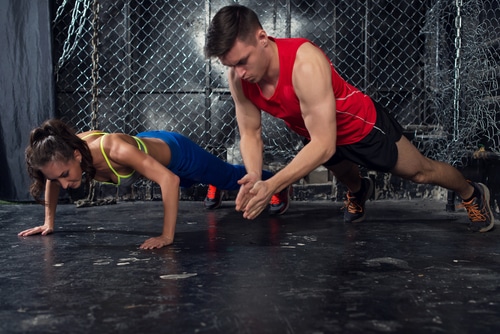
When you have low testosterone, you'll have to work much harder in the gym to get the same results you once got with much less work.
If you get results at all.
The results are very different when you start a program of Testosterone Replacement Therapy (TRT).
Studies have shown that, over a 12 month period, most men on TRT will gain approximately 10 pounds of muscle mass and lose 2 pounds of body fat.
It is imperative to understand, however, that work still needs to be invested in the gym to obtain a "muscular" look. When it comes to TRT, weightlifting is critical if you expect to gain muscle.
That being said, the sweat equity invested (in terms of time and energy invested into workouts) pays a much higher dividend with optimal testosterone levels relative to those that are deficient.
You'll begin to notice a difference as your body finally gets the help it needs to grow at a normal rate in response to the stress you're putting on it — testosterone is critical to normal muscle growth.
Because TRT is only meant to replace your existing testosterone levels, there's nothing special that you need to do beyond TRT and high-impact exercise to take advantage of the restoration of your body's normal level of testosterone.
You can likely continue with your existing schedule, though you may actually find that you don't have to work as hard in the gym to see results.
12. TRT Is NOT the Same as Illegal Steroid Use

If you already have normal levels of testosterone, TRT isn't for you.
TRT is a medical treatment designed to treat hormone imbalance.
If your testosterone levels chronically fall below the optimum range and you're experiencing symptoms that are damaging your quality of life, TRT may be an appropriate treatment.
However, when we talk about TRT and getting in shape, we always have to make some qualifications:
TRT is NOT the same as illegal steroid use.
The amount of testosterone that you'll be taking during TRT is far lower than the amount steroid abusers use to circumvent natural muscle growth limits.
TRT is not appropriate for men (or women) who do not have a low testosterone issue and only want to increase their results in the gym.
TRT is only appropriate when a patient is both exhibiting the symptoms of low testosterone and has low testosterone levels (as evidenced by blood tests).
To put it simply, you can't use Testosterone Replacement Therapy as a bodybuilding shortcut.
Exercise Supports Healthy Testosterone Levels — TRT Overcomes Low T
If you're struggling to put in the fitness work to meet your goals due to chronic fatigue, you might consider the possibility that you're suffering from low testosterone.
If you're having an unusually difficult time losing excess weight or you're having trouble maintaining your weight despite proper eating and exercise, hormone imbalances like Low T might be the culprit.
We recommend taking the first step towards looking and feeling better by getting a thorough examination that focuses on finding the actual source of your symptoms.
The first consult is free — click the button to get started.
Talk to a TRT expert and get back to feeling the way you're supposed to.
Now serving patients in all Texas cities.
Will Arm Curls Release Testosterone
Source: https://tctmed.com/exercise-and-testosterone/
.jpg)
.jpg)

Leave a Comment